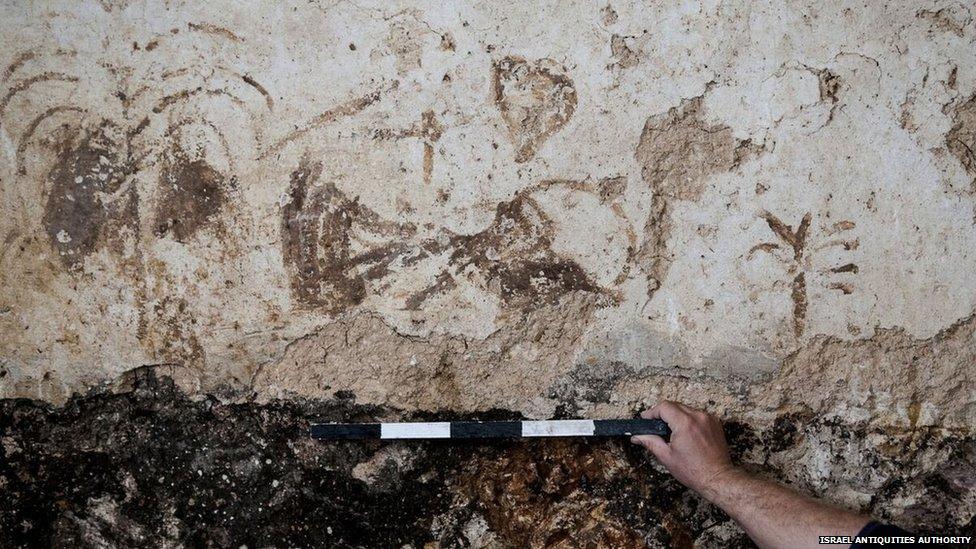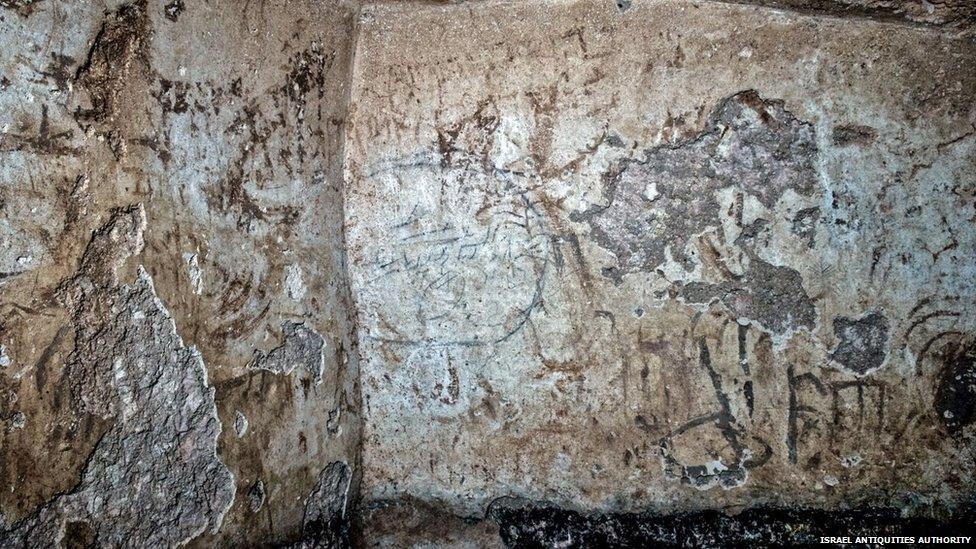'Ancient Hebrew inscriptions' baffle Israeli archaeologists
- Published

The inscriptions include palm trees and a boat
Israeli archaeologists say they are trying to decode ancient inscriptions written in Hebrew script discovered at a dig in Jerusalem.
The writing was found on the walls of a room containing the remains of a Jewish ritual bath, or mikveh, believed to be about 2,000 years old.
Experts are now trying to decipher words and symbols including a boat and palm trees.
They say the markings may be graffiti or have some religious significance.
One of the symbols could be a menorah - the seven-branched candelabrum which stood in the two Biblical Jewish Temples in Jerusalem - and some of the inscriptions might indicate names, according to the Israel Antiquities Authority (IAA).
The find was made when antiquity officials inspected the site slated for a nursery in the Arnona district.
On its walls were letters in Aramaic - the common language spoken in the time of Jesus - written in Hebrew script, and a series of symbols either smeared on with mud, or cut into the plaster.
"There is no doubt that this is a very significant discovery," said excavation directors Royee Greenwald and Alexander Wiegmann.
"Such a concentration of inscriptions and symbols from the Second Temple period at one archaeological site, and in such a state of preservation, is rare and unique and most intriguing."
The paintings and inscriptions have now been removed from the mikveh and transferred to conservation laboratories.
The Israel Antiquities Authority says it plans to display the inscriptions to the general public.

The room containing the ritual bath is believed to be about 2,000 years old

The inscriptions were written in Aramaic in a Hebrew script